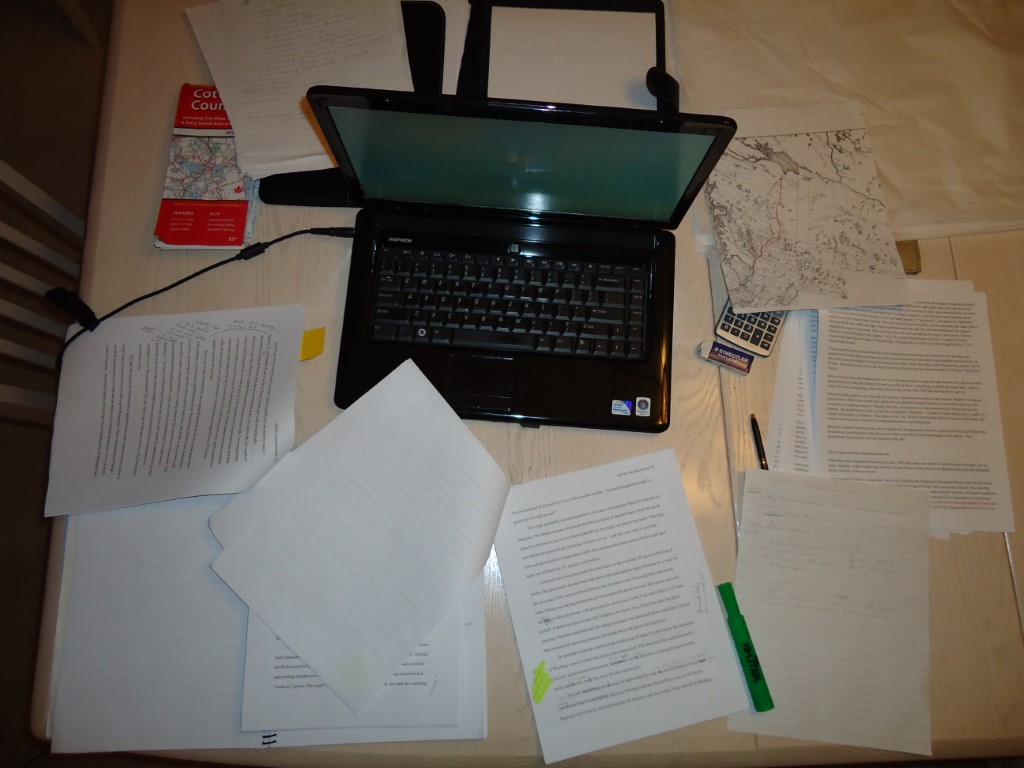MUSKOKA’S MAIN STREET: The Subtitle
Subtitles for non-fiction books generally follow a formula: Title (usually in the form of a clever phrase or ‘hook’), then a colon, then the Subtitle (which usually explains what the book is about.) Here are two examples:
- Retail Nation: Department Stores and the Making of Modern Canada by Donica Belisle, and
- Boys and Girls in No Man’s Land: English Canadian Children and the First World War by Susan R. Fisher
It takes some time and effort to find a title that really nails the essence of a book and also helps it appeal to as wide a readership as possible. My very first draft of this was Muskoka’s Main Street: The Muskoka Colonization Road. Although we were both happy with the title, my publisher and I wanted to expand the subtitle to include several key elements about the road, and also to draw in readers beyond the boundaries of Muskoka. So the subtitle evolved to “150 Years of Life Along an Ontario Colonization Road.”
I still wasn’t sure it captured enough essential elements of the book. So I turned to my trusted writers, Lynn and Jen, and we conducted a brainstorm session via email. (My facilitator friends will be interested to know this process worked fine, although without the same energy level as a live brainstorming session.)
The measure of a successful brainstorm is not the quality but the quantity of the ideas. No idea is “bad”‘; they all contribute to getting to a solution. Every suggestion sparks something else.
I started the ball rolling with several options, they responded with new suggestions, with combining some options, and suggesting elements they felt were essential, like including the phrase “Muskoka Colonization Road.” Over the course of two days, we played with about 20 different options, variations and permutations, until one emerged that met the criteria and satisfied all of us.
You may or may not agree with the final choice – and it may change again before final printing – but here is a peek at some of the ideas we went through to decide on a subtitle.
- Courage and Adventure on the Muskoka Colonization Road
- Free Land and Heartache on the Muskoka Colonization Road
- Personalities and Perils on the Muskoka Colonization Road
- The Story of the Muskoka Colonization Road
- Stories of Courage and Adventure on the Muskoka Colonization Road
- An Ontario Colonization Roads Success Story
- How a Pioneer Road Carved the Canadian Shield and Opened Up Ontario’s Cottage Country
- 150 Years of History and Adventure on the Muskoka Colonization Road
- The Surveyors, Settlers and Entrepreneurs Who Built the Muskoka Colonization Road
- The Surveyors, Settlers and Entrepreneurs Who Carved a Road Through the Canadian Shield
- The Surveyors, Settlers and Entrepreneurs Who Carved a Community in the Canadian Shield
- The Surveyors, Settlers and Entrepreneurs Who Opened Up Ontario’s Cottage Country
- The Adventure Story of One Ontario Colonization Road
- What it Took To Open up Ontario One Colonization Road at a Time
See how the process works? And how we built on ideas? And all the elements we were trying to include?
The final choice is this: Muskoka’s Main Street: 150 Years of Courage and Adventure Along the Muskoka Colonization Road. It captures the history, the name of the road and two key human elements – courage and adventure – at the heart of the book.
What do you think?
